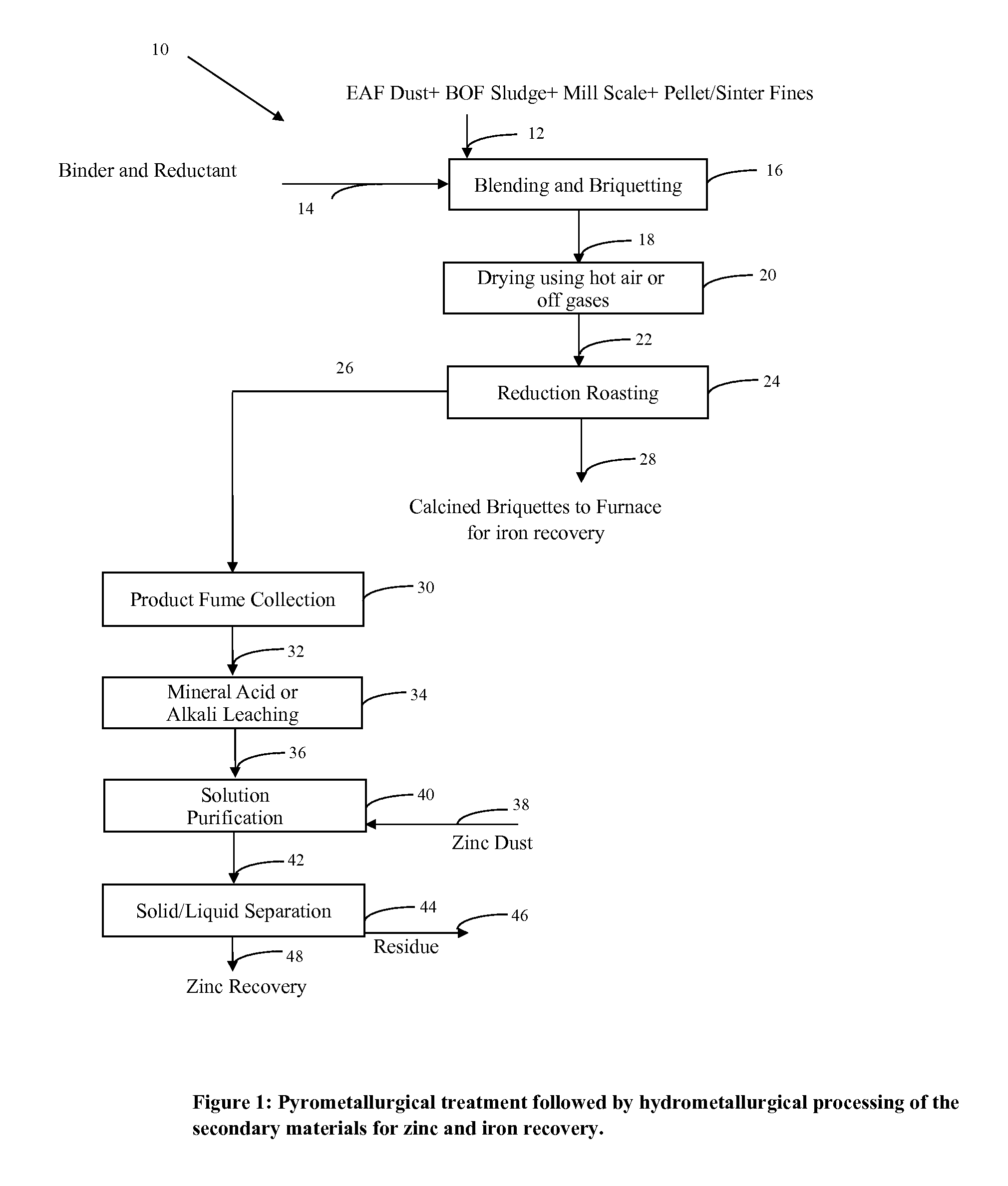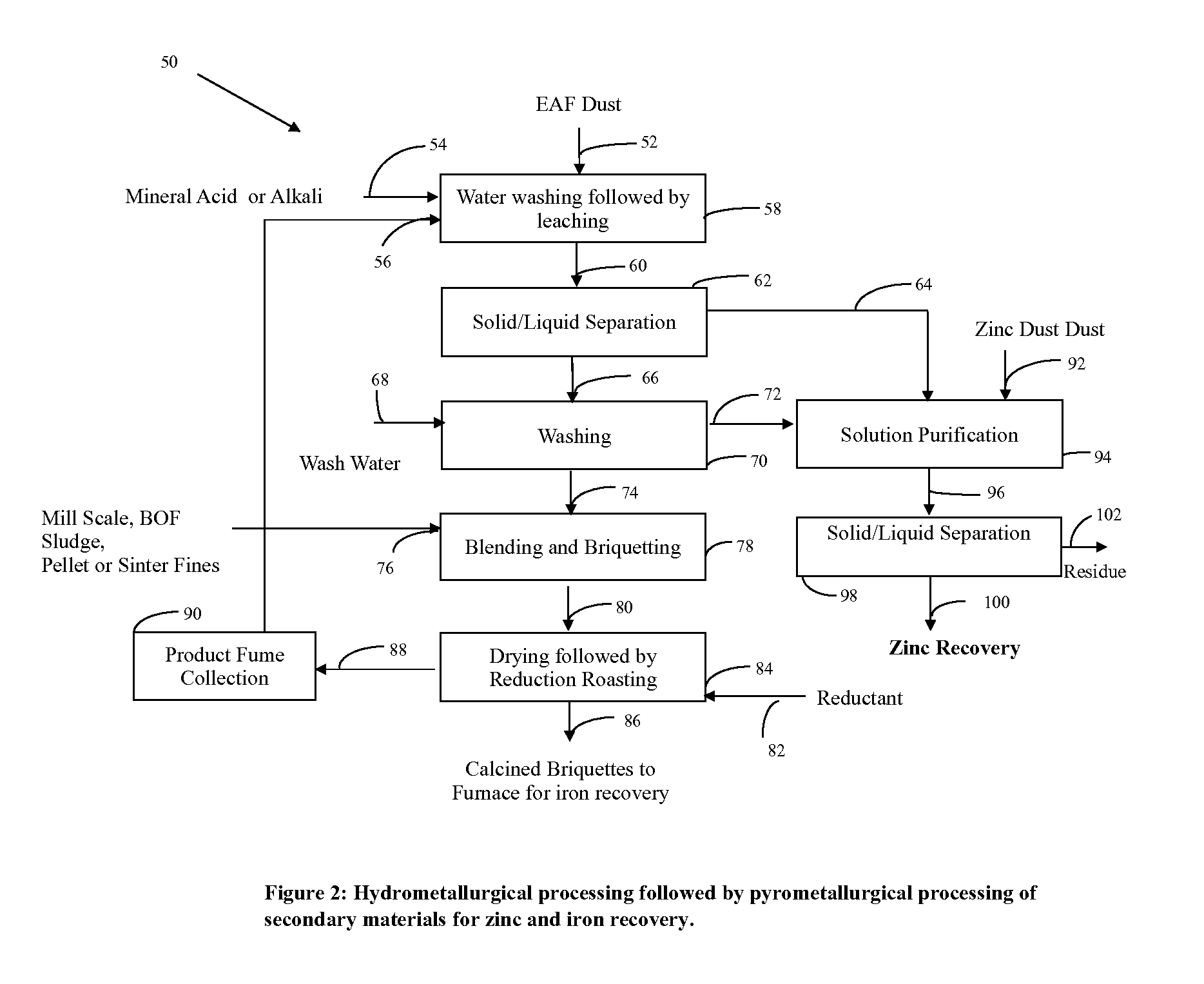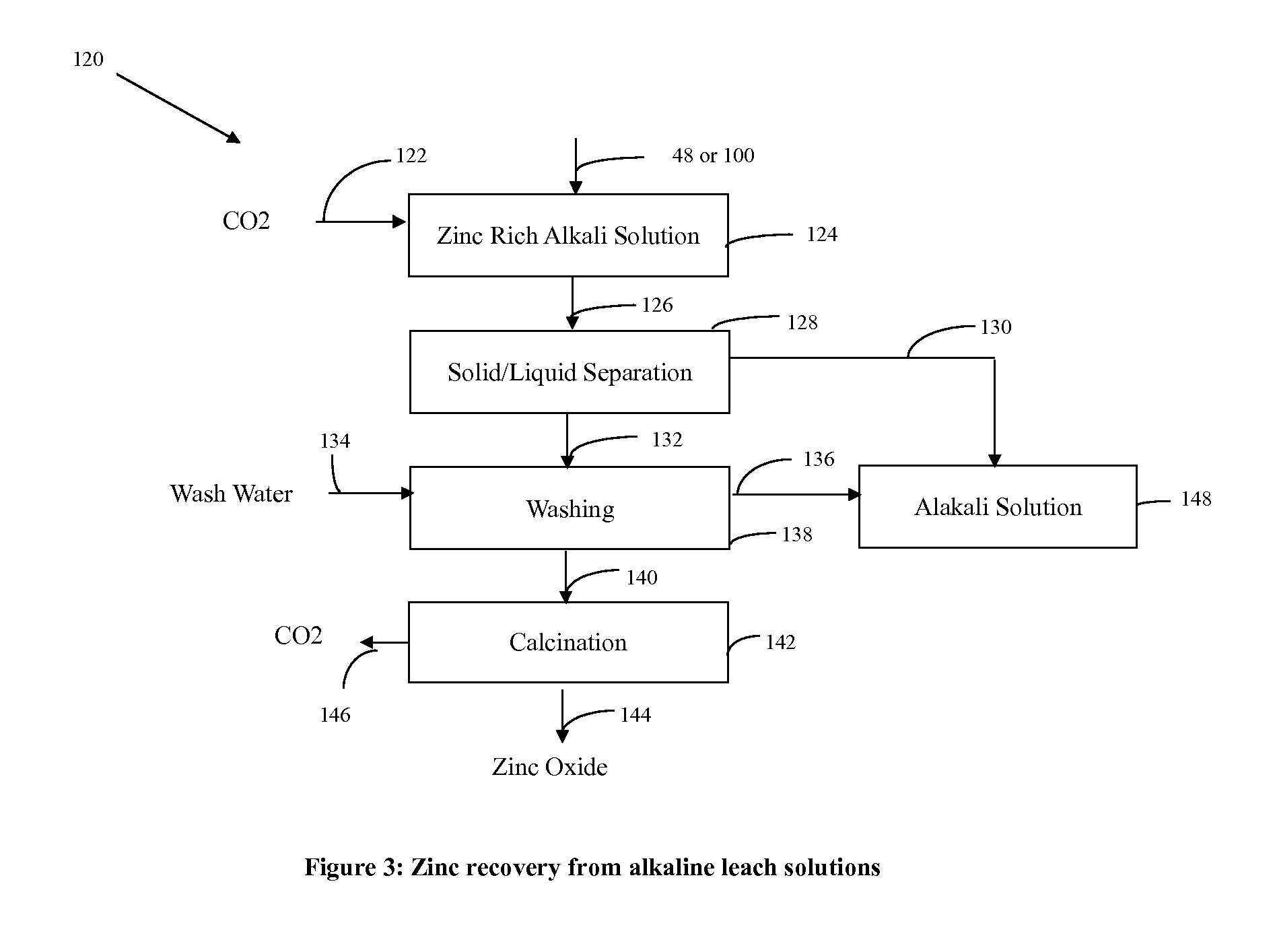Process for separating iron from other metals in iron containing feed stocks
- Summary
- Abstract
- Description
- Claims
- Application Information
AI Technical Summary
Benefits of technology
Problems solved by technology
Method used
Image
Examples
example
[0032]The average chemical analysis of various feed stock such as Eaf dust, BOF Sludge, Mill Scale and Pellet Fines are provided in Table 1.
TABLE 1Chemical analysis of EAF dust, BOFSludge, Mill Scale and Pellet Fines.BOFMillPelletElementEAF DustSludgeScaleFinesZn %23.02.30——Fe %24.041.976.2 61.3 Mn %2.200.600.700.23Pb %0.750.30——Cr %0.150.06——Si %1.800.00—3.00Al %0.700.20——Cd %0.040.00——Ca %11.32.800.903.00Mg %3.841.20—0.75Na %0.510.00——C %——0.70—
Step 1 (Blending and Briquetting). A mixture of the four materials shown in Table 1 is prepared by combining equal proportions of each material. Starch and waste oil are added to the mixture as a binder and as a reductant, respectively. The mixture is then processed in a briquetting machine to produce briquettes of sufficient strength for further processing. The briquettes produced were drop tested from a height of 5′, and were found to pass the drop test. The briquettes thus produced were initially dried at 60° C. for an hour. A sample was...
PUM
| Property | Measurement | Unit |
|---|---|---|
| Temperature | aaaaa | aaaaa |
| Temperature | aaaaa | aaaaa |
| Temperature | aaaaa | aaaaa |
Abstract
Description
Claims
Application Information
 Login to View More
Login to View More - R&D
- Intellectual Property
- Life Sciences
- Materials
- Tech Scout
- Unparalleled Data Quality
- Higher Quality Content
- 60% Fewer Hallucinations
Browse by: Latest US Patents, China's latest patents, Technical Efficacy Thesaurus, Application Domain, Technology Topic, Popular Technical Reports.
© 2025 PatSnap. All rights reserved.Legal|Privacy policy|Modern Slavery Act Transparency Statement|Sitemap|About US| Contact US: help@patsnap.com



